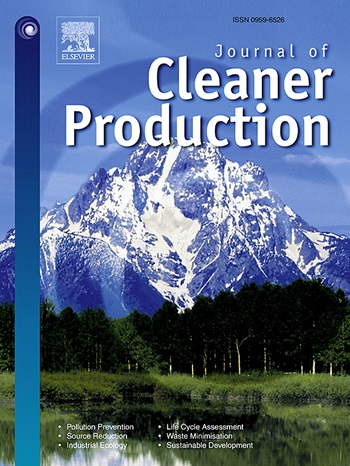Role of Advanced Steelmaking Technologies in Global Climate Change Mitigation Scenarios
IF 9.7
1区 环境科学与生态学
Q1 ENGINEERING, ENVIRONMENTAL
引用次数: 0
Abstract
This study explores different decarbonization strategies in the iron and steel sector using the MIT Economic Projection and Policy Analysis (EPPA) model, a multi-sector, multi-region model of the world economy. Opportunities to switch away from coal-based production processes and toward processes employing electric arc furnaces (EAF) in conjunction with either scrap steel or direct reduced iron (DRI) fueled by either natural gas with carbon capture and storage (NG CCS DRI-EAF) or hydrogen (H2 DRI-EAF) are considered. Under global mitigation scenarios, adoption of advanced steelmaking technologies can enable deep decarbonization of the steel sector by 2050, but the scale of their deployment depends on assumed costs. Under base cost assumptions, a combination of switching from conventional technologies that use coal to those that use electricity and natural gas, greater use of scrap, and demand reduction can lower iron and steel sector emissions by more than 50% relative to today, but deeper decarbonization remains challenging. When the cost of advanced steelmaking technologies is assumed to be lower, there is substantial deployment of NG CCS DRI-EAF, while H2 DRI-EAF is deployed only if the cost of hydrogen production is also assumed to be lower. Across the scenarios considered, steel-related direct emissions are abated by about 45-75% relative to a reference case at a CO2 price of $200/tCO2. Overall, steelmaking can be more or less costly to decarbonize compared to the energy sector as whole, depending on technology assumptions.先进炼钢技术在减缓全球气候变化情景中的作用
本研究使用麻省理工学院经济预测和政策分析(EPPA)模型(一个多部门、多地区的世界经济模型)探讨了钢铁行业的不同脱碳策略。考虑了从煤基生产工艺转向电弧炉(EAF)工艺的机会,电弧炉(EAF)与废钢或直接还原铁(DRI)相结合,由具有碳捕获和储存(NG CCS DRI-EAF)或氢气(H2 DRI-EAF)的天然气为燃料。在全球减缓情景下,采用先进的炼钢技术可以在2050年前实现钢铁行业的深度脱碳,但其部署规模取决于假定的成本。在基本成本假设下,从使用煤炭的传统技术转向使用电力和天然气的技术,增加废料的使用,以及减少需求,可以使钢铁行业的排放量相对于目前降低50%以上,但进一步脱碳仍然具有挑战性。当先进炼钢技术成本较低时,会大量部署NG CCS DRI-EAF,而H2 DRI-EAF只有在制氢成本也较低的情况下才会部署。在考虑的所有情景中,与二氧化碳价格为200美元/吨二氧化碳的参考情况相比,与钢铁相关的直接排放减少了约45-75%。总的来说,与整个能源部门相比,炼钢的脱碳成本可能更高或更低,这取决于技术假设。
本文章由计算机程序翻译,如有差异,请以英文原文为准。
求助全文
约1分钟内获得全文
求助全文
来源期刊

Journal of Cleaner Production
环境科学-工程:环境
CiteScore
20.40
自引率
9.00%
发文量
4720
审稿时长
111 days
期刊介绍:
The Journal of Cleaner Production is an international, transdisciplinary journal that addresses and discusses theoretical and practical Cleaner Production, Environmental, and Sustainability issues. It aims to help societies become more sustainable by focusing on the concept of 'Cleaner Production', which aims at preventing waste production and increasing efficiencies in energy, water, resources, and human capital use. The journal serves as a platform for corporations, governments, education institutions, regions, and societies to engage in discussions and research related to Cleaner Production, environmental, and sustainability practices.
 求助内容:
求助内容: 应助结果提醒方式:
应助结果提醒方式:


